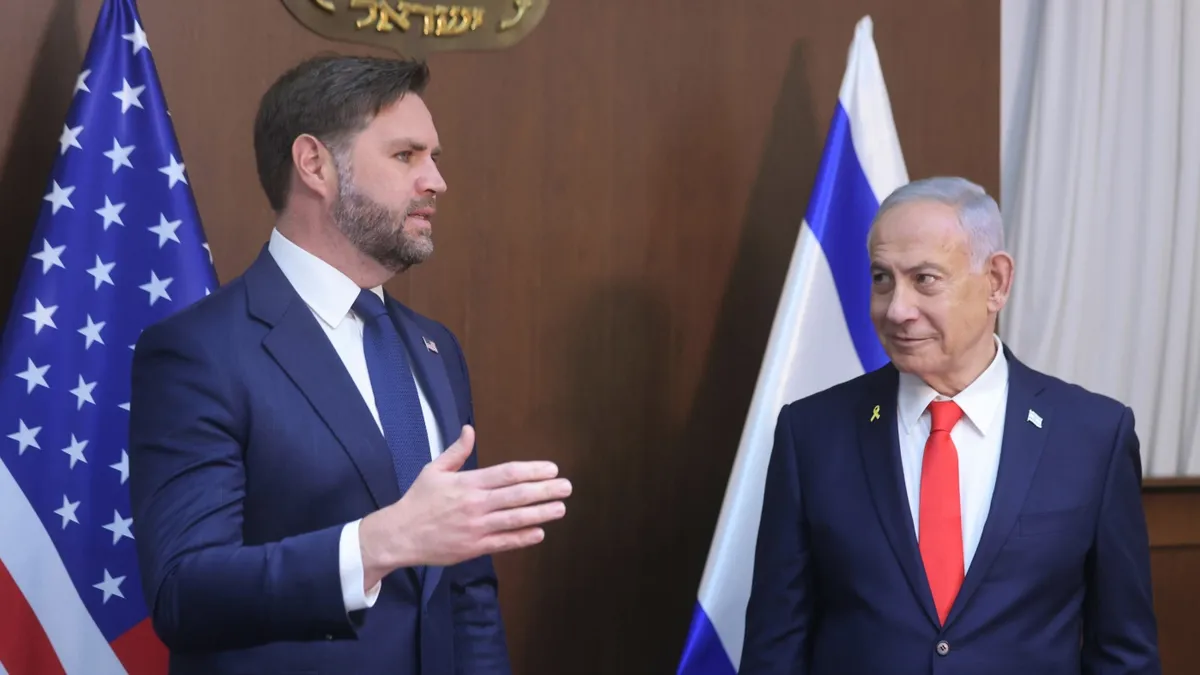
On Wednesday, Vice President Vance announced that the Israel-Hamas ceasefire is currently holding, yet he recognized the significant challenges that lie ahead in the effort to fully end the ongoing war. "We have a very tough task ahead of us, which is to disarm Hamas but rebuild Gaza," Vance stated following his meeting with Israeli Prime Minister Benjamin Netanyahu in Jerusalem. This meeting is part of a high-profile U.S. delegation in Israel this week, focused on maintaining the truce and exploring options for a more complex second phase of the peace process.
The U.S. team includes notable figures such as Middle East envoy Steve Witkoff, President Trump's son-in-law Jared Kushner, and Adm. Brad Cooper, the head of U.S. Central Command. Secretary of State Marco Rubio is also expected to join the delegation this week. The Israeli media has dubbed this American group the "Bibisitters," a play on Netanyahu's widely recognized nickname "Bibi."
During the meeting, Netanyahu characterized the discussions with Vice President Vance as a chance to make collaborative decisions within a "very tight-knit and trusted partnership." While the U.S. officials engage in extensive discussions with Israeli leaders, they are not anticipated to meet with Hamas, as the U.S. classifies Hamas as a terrorist organization, which prohibits direct contact. In an exception, Witkoff and Kushner reportedly met with Hamas leaders in Egypt to finalize the ceasefire details that took effect on October 10.
The ceasefire remains largely intact, despite a recent flare-up in violence that resulted in the deaths of two Israeli soldiers and over 40 Palestinians. However, the upcoming Phase 2 of the truce presents more complex challenges. Currently, Gaza lacks a functioning government, and its future governance remains uncertain due to the decimation of Hamas leadership during the conflict. The ceasefire agreement stipulates that Hamas will not participate in any future government structure.
Instead, the interim governance is set to be led by 15 nonpartisan technocrats, but a timeline for this transition is still unclear. Addressing the governance concerns, Vance emphasized the importance of prioritizing urgent needs—such as food, medicine, and security—over long-term political structure. "If we get to the point where we're arguing exactly what the governing structure in Gaza is long term, we should pat ourselves on the back because that's a very good problem to have," Vance remarked during a visit to a civilian-military coordination center set up by 200 U.S. troops just ten miles from the Gaza border.
This newly established coordination center will involve officials from the U.S., other countries, and various aid organizations to ensure a unified approach to operations in Gaza. The ceasefire plan also includes provisions for Hamas to disarm, although the group has yet to publicly commit to this action. Vance reiterated the necessity of disarmament but refrained from detailing the mechanisms for achieving it.
Additionally, Israeli forces, who currently control half of Gaza, are expected to withdraw as the situation stabilizes. An international stabilization force is anticipated to replace Israeli troops, although details regarding which countries will contribute troops, their arrival timelines, and specific mandates remain uncertain. Israel has made it clear that it will have the final authority over the composition of these foreign forces.
Former President Trump has consistently expressed his desire to keep the U.S. out of prolonged military engagements. However, he also considers himself a skilled negotiator capable of resolving conflicts. He is credited with playing a pivotal role in brokering the Gaza ceasefire after two years of intense violence. The Trump administration has emphasized that the 200 U.S. troops stationed in Israel will focus on operations at the coordination center and will not engage in ground activities in Gaza.
Despite numerous U.S. presidents, dating back to Harry Truman, attempting to mediate the Israeli-Palestinian conflict, a comprehensive peace agreement has yet to be achieved. The current efforts led by Vice President Vance and the U.S. delegation aim to navigate the complexities of the ceasefire and set the groundwork for a more stable future in the region.